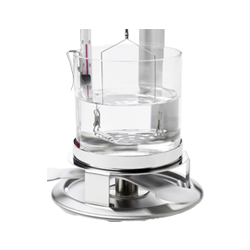Measuring density of a sample is an important quality parameter of both raw materials and finished products. Various techniques enable the density of solid, viscous and liquid materials to be accurately determined e.g. metals, plastics, chemicals, lubricants and food.
Density for Quality Control
A variation in a raw material, indicated by a change in the density, may have a detrimental outcome on the functioning or quality of the final product. Density measurement of raw materials can be used to confirm the purity of the material. If a substance has been adulterated with a cheaper alternative, the measured density of the composite material will be different from the pure substance.
Density can also be used to ensure homogeneity. If a manufactured part is not homogenous, key performance attributes such as strength and crack resistance can be affected. For example, an internal air bubble could ultimately cause a part to fail when placed under stress. Random sampling of parts is a simple and cost-effective way to monitor ongoing quality.
Why Accurate Weighing is Crucial
Common laboratory gravimetric procedures for determining density are the buoyancy technique, the displacement principle and the pycnometer method.
The most widely used method is the buoyancy technique which utilizes Archimedes' principle: a body immersed in fluid indicates an apparent loss in weight equal to the weight of the fluid it displaces. This ancient principle, from around 200 BC, is precisely what is used nowadays to determine density gravimetrically. Accurate density measurement therefore is highly dependent upon accurate weight values.For example, blood contains natural buffers to maintain a stable pH of between 7.35 and 7.45 so that our enzymes work correctly. As enzyme activity varies with pH, maintaining a constant pH is essential in biochemical assays to ensure the correct level of activity is observed. In commercial applications, buffers can be found in shampoos to prevent skin irritation, in baby lotions to inhibit the growth of bacteria, and in contact lens solutions to ensure the pH level of the fluid remains compatible with that of the eye.
Preparing buffers consists of several steps: Weighing-in the components, dissolving the components, adjusting the pH and replenishing to the final volume. As the ratio of the acid to base in a buffer is directly related to the final pH, it is vital to weigh the components with a high degree of accuracy. So, it is important that the equipment used (balance, pipettes and pH meter) are properly calibrated and have sufficient accuracy.


























